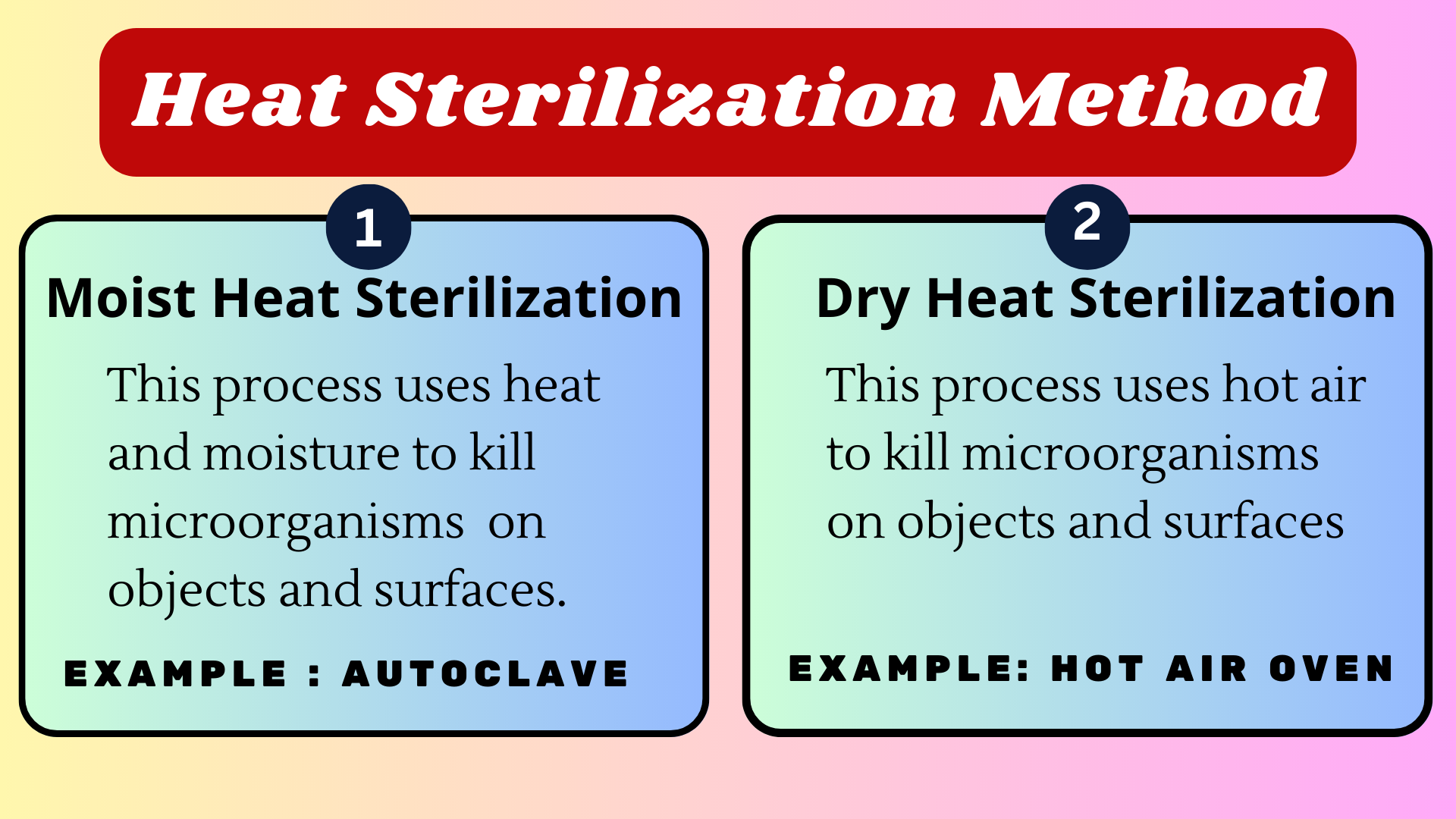Heat is widely recognized as one of the most effective sterilizing agents due to its ability to inactivate or kill microorganisms, including bacteria, viruses, and spores. There are two main types of heat sterilization: moist heat and dry heat. Both of these heat sterilization method come under physical methods of sterilization.

Moist Heat Sterilization:
Moist heat sterilization, commonly achieved through autoclaving, utilizes high temperature and steam under pressure to achieve sterilization. The combination of heat and moisture has several mechanisms of action:
a. Protein Denaturation: The high temperature causes the denaturation of proteins present in microorganisms, leading to their inactivation. The disruption of protein structures renders them nonfunctional, preventing microorganisms from carrying out vital metabolic processes.
b. Coagulation: Moist heat also promotes coagulation of microbial enzymes and cellular components, further contributing to the inactivation of microorganisms. This irreversible process damages the microorganisms’ structure and function, ensuring effective sterilization.
c. Increased Penetration: The presence of moisture in autoclaves allows for better penetration of heat into the items being sterilized. Steam can easily diffuse through materials and reach all surfaces, ensuring thorough sterilization even in complex instruments or materials with intricate structures.
Dry Heat Sterilization:
Dry heat sterilization involves using hot air or an open flame to achieve sterilization. Unlike moist heat sterilization, dry heat relies on higher temperatures and longer exposure times. The mechanisms of action in dry heat sterilization include:
a. Oxidation: Dry heat sterilization primarily acts by oxidizing the microorganisms’ cellular components. The high temperature causes the oxidation of cellular proteins, lipids, and other essential molecules, resulting in microbial inactivation.
b. Dehydration: Dry heat also dehydrates microorganisms, leading to their death. The prolonged exposure to high temperatures removes water from microbial cells, disrupting their metabolic processes and causing irreversible damage.
Dry heat sterilization is commonly used for heat-stable materials that cannot withstand moisture, such as glassware, metal instruments, and powders. It is essential to note that dry heat sterilization generally requires higher temperatures and longer exposure times compared to moist heat sterilization.
Overall, heat, whether in the form of moist heat or dry heat, is a highly effective sterilizing agent. Its ability to denature proteins, coagulate cellular components, oxidize molecules, and dehydrate microorganisms ensures reliable and thorough sterilization, making it a crucial method in various industries, including healthcare, research, and manufacturing.
Read this also: